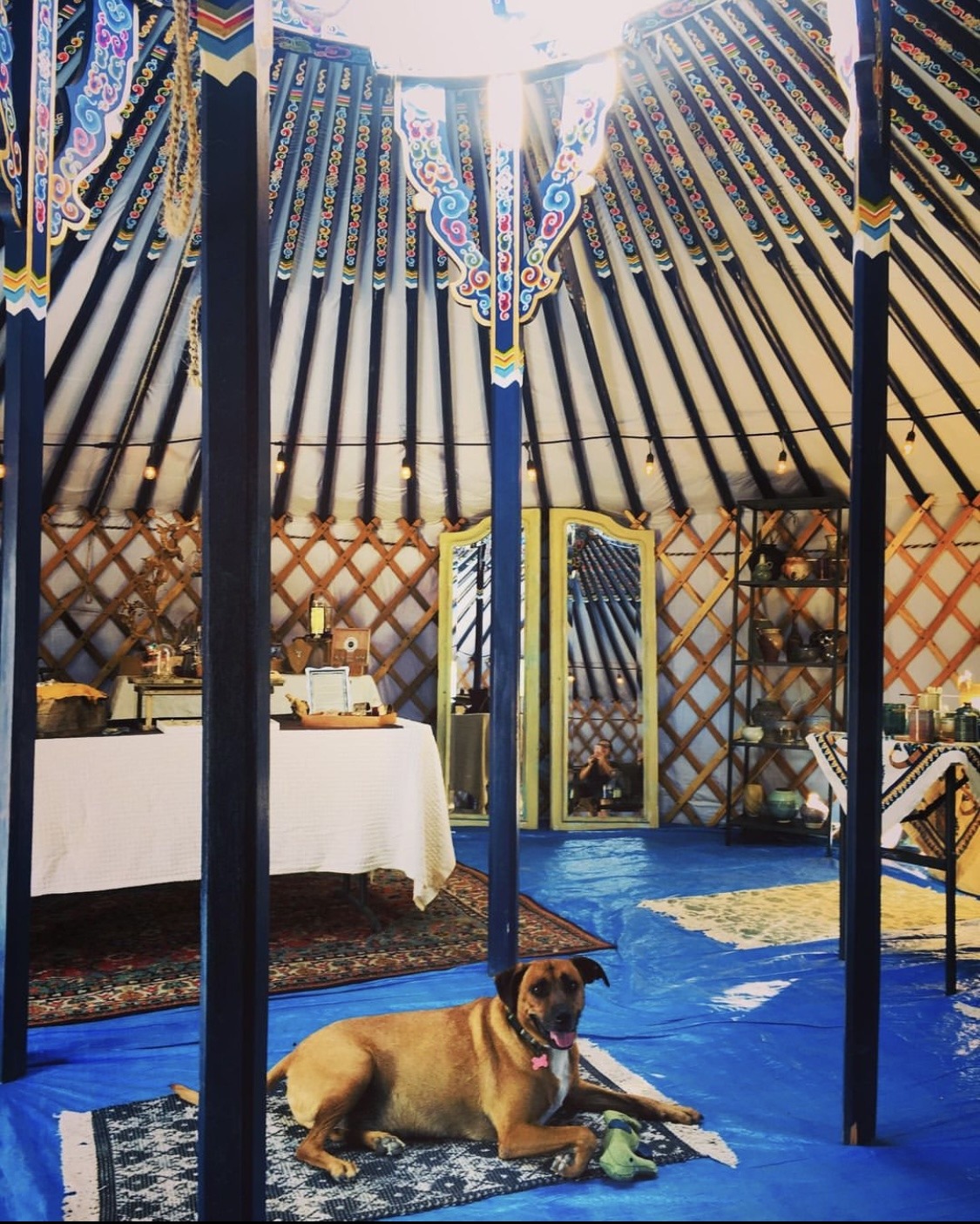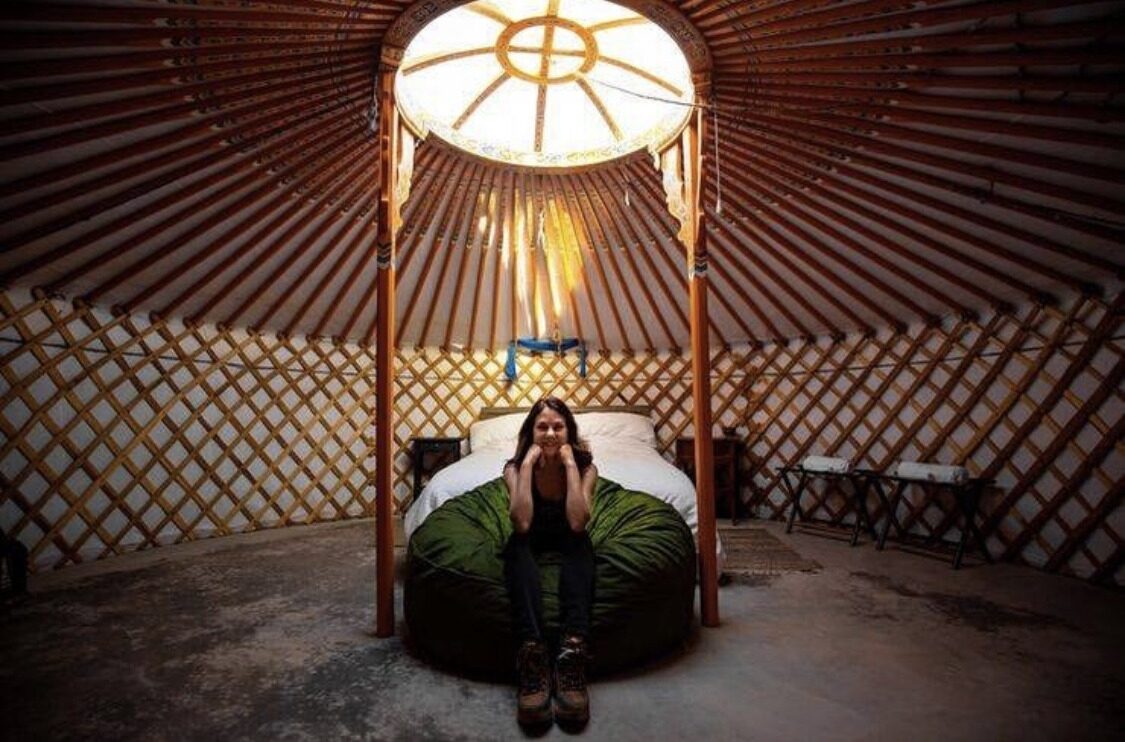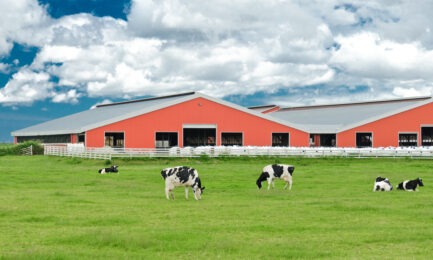Just a few miles from the entrance to Joshua Tree National Park lies a unique, eco-friendly travel experience. A series of handmade Mongolian tents in the desert make up the Eco Yurt Village. Beautiful scenery and plentiful amenities make the property perfectly suited to host small groups on a business or leisure retreat. What really elevates the experience is the use of the HomeBiogas energy system, which turns organic waste into cooking gas for guests and fertilizer for the nearby plants.
What’s in a Yurt?

The site of 28 Palms Ranch offers a more sustainable alternative to the traditional hotel or resort. All amenities, including the lights, temperature control, kitchens and even bathrooms run on renewable energy. The toilets are fully flushable despite the lack of a septic system—waste goes directly back to the HomeBiogas system and is converted into cooking gas and odor-free fertilizer. Solar power from owner Erin Stevenson’s nearby home is routed to the village to power electronics.
Eco Yurt Village’s focus on sustainability doesn’t eliminate the comforts of modern society, though. An AC unit and space heater let guests moderate the extreme temperatures of the desert, while an indoor sink has cooking essentials ready to use.
The Big Blue yurt was originally intended to host art and yoga classes but has been refitted into the property’s flagship suite. The tent can comfortably house six people. Stevenson believes that it would be perfect for a business or pleasure retreat.
Early in June, 28 Palms Ranch started the process of adding five more tents and dozens more trees to the village. Each yurt is available for booking on their AirBnB page.
Read More: Modeling Green Venues
The Birth of a Yurt Village
When Erin Stevenson, owner and operator of 28 Palms Ranch, visited Joshua Tree National Park, she instantly fell in love with the desert. Her entrepreneurial spirit kicked in when she realized that the area was severely lacking in accommodations. Nearly 3 million people visit the park every year, but the pool of hotels tourists have to pick from is very shallow. Stevenson set to work researching how to take advantage of the opportunity.
Five acres of property was easy to come by. She considered using Airstreams as lodging, but when the prohibitive cost made her change course, she turned to the yurt. These tents give a unique, homey character to the property, aided by the 75 trees Stevenson planted around the yurts.

Using the HomeBiogas system was a no-brainer for Stevenson. She had used the system for several years before establishing the village, and its waste recycling capabilities made it the perfect solution to the lack of a sewer system. Eliminating the need to buy propane for cooking has dramatically reduced the operating cost of the property.
Unfortunately, the state of California may require Stevenson to convert part of her waste recycling system into a standard septic system that sends waste underground. Her hope is that educating regulators will teach them how safe and beneficial the HomeBiogas system is.
“It’s such a positive product, I just wish we could wrap our minds around it a little better,” she said in an interview. “We have a few fights to fight, but hopefully we’ll win.”
Biogas Made Easy

When most people think of compost, they conjure up images of plastic bins full of dirt and earthworms. While that works for some, the HomeBiogas device offers a more versatile way to recycle organic waste.
The large chute is where food, plant clippings and other waste is poured in. A colony of bacteria in the bottom half of the device breaks down the matter into methane gas stored in the top half. The gas is pumped through a small tube on the other end, leading directly to a gas burning stove. Sandbags on the upper half put the gas under pressure to ensure its passage through the tube. A secondary chute produces liquid fertilizer that can be put towards homegrown food.
At 28 Palms Ranch, the Home Biogas system handles septic and food waste for guests. Visitors are encouraged to use the system themselves. The implementation of the system at a rental property represents an important step towards a more sustainable hospitality industry. With enough space and sunlight, anyone can install this fully recyclable system in their backyard.
Resources like this are vital to the reduction of greenhouse gasses. 40 million tons of food are sent to landfills in the United States each year. In addition to the wasted energy that goes into producing this food, rotting organic matter produces nitrogen pollution leading to algae blooms and dead zones. Making biogas easy and accessible is a big step towards reducing food waste around the world.
Read More: California: Meet Where Sustainable Innovation Lives
Potential for Greener Tourism
Larger units, like the HomeBiogas 7, are available for small farms and restaurants. It can generate up to six hours of cooking gas every day, greatly reducing or eliminating the need for traditional gas. With the growing trend of consumers seeking out eco-friendly businesses, the system may be a good investment.
Later this year, HomeBiogas is planning to expand into the commercial food industry. Their HomeBiogas 100 industrial unit takes food waste from kitchens in restaurants and hotels and converts it into energy for hot water.
With a relatively small footprint and low cost compared to traditional waste disposal, the industrial system can help the travel industry move towards a greener future with less food waste. Properties like 28 Palms Ranch are on the cutting edge of sustainability. Hopefully, it can inspire others to follow in their footsteps.





